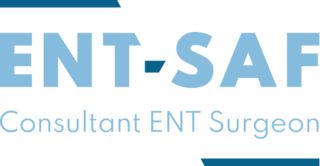Understanding Septoplasty: A Guide to Nasal Septum Correction

A deviated septum is a condition where the nasal septum—the bone and cartilage that divide the nasal cavity—is off-center or crooked, making breathing difficult. For those experiencing significant discomfort or breathing problems due to a deviated septum, a surgical procedure known as septoplasty may be recommended. As an ENT (Ear, Nose, and Throat) consultant, I frequently perform septoplasties to help patients breathe easier and improve their quality of life. In this blog post, I’ll walk you through the essentials of septoplasty, including what it involves, who might need it, and what to expect during recovery.
What Is a Deviated Septum?
The nasal septum should ideally run down the center of the nose, providing equal airflow through both nostrils. However, for some people, the septum is deviated to one side, leading to:
- Difficulty Breathing: The deviation can block one or both nostrils, making it hard to breathe through your nose.
- Nasal Congestion: Persistent congestion or a feeling of fullness in one side of the nose.
- Frequent Sinus Infections: A deviated septum can lead to poor drainage of the sinuses, resulting in frequent infections.
- Nosebleeds: The altered airflow can dry out the nasal membranes, leading to recurrent nosebleeds.
- Snoring or Sleep Apnea: Breathing difficulties caused by a deviated septum can contribute to snoring or obstructive sleep apnea.
When Is Septoplasty Necessary?
Septoplasty is often recommended when the symptoms of a deviated septum significantly impact a patient’s daily life and cannot be managed effectively with medication or other non-surgical treatments. Some common reasons for undergoing septoplasty include:
- Chronic Nasal Obstruction: Persistent difficulty breathing through the nose, especially if it affects sleep or daily activities.
- Recurrent Sinus Infections: Frequent sinus infections that are linked to poor nasal drainage caused by the deviated septum.
- Severe Nosebleeds: Recurrent nosebleeds that are traced back to the deviated septum.
- Corrective Surgery Following Nasal Trauma: If a nose injury has caused a deviation that impairs breathing.
The Septoplasty Procedure
Septoplasty is typically performed under general anesthesia. The surgery usually takes about 60 to 90 minutes.
During the procedure, I will make an incision inside the nostril to access the septum. The deviated portions of the septum are then reshaped, repositioned, or removed to straighten the nasal passage. The mucous membrane that covers the septum is preserved and placed back over the corrected septum. In most cases, no external incisions are required, and there are no visible scars after the procedure.
What to Expect After Surgery
Recovery from septoplasty typically involves some discomfort, but it’s manageable with the right care and attention. Here’s what you can expect post-surgery:
- Nasal Congestion and Swelling: It’s normal to experience congestion and swelling for a few days or weeks after the surgery. This should gradually improve as you heal.
- Mild Pain: Some discomfort is expected, but pain can be controlled with prescribed medications.
- Breathing Improvement: While it may take several weeks to experience the full benefits, most patients notice a significant improvement in breathing once the initial swelling subsides.
- Avoid Strenuous Activities: It’s important to avoid heavy lifting, bending over, or strenuous exercise for a few weeks to prevent complications.
- Follow-Up Visits: Regular follow-up appointments will be scheduled to monitor your recovery and ensure everything is healing properly.
Potential Risks and Complications
As with any surgical procedure, there are risks associated with septoplasty. These can include bleeding, infection, or a reaction to anesthesia. In rare cases, a septoplasty may not completely alleviate symptoms, or further surgery may be needed. However, these risks are minimal, and I take every precaution to ensure a safe and successful outcome.
Final Thoughts
If you struggle with breathing difficulties, chronic sinusitis, or other issues related to a deviated septum, septoplasty could offer significant relief. As your ENT consultant, I’m here to guide you through the process, ensuring you fully understand the procedure and what to expect before, during, and after surgery.
Should you have any questions or wish to schedule a consultation, please don’t hesitate to contact my clinic. Together, we can determine the best approach to improving your breathing and overall health.
To your health,
Ms. Safina Ali
